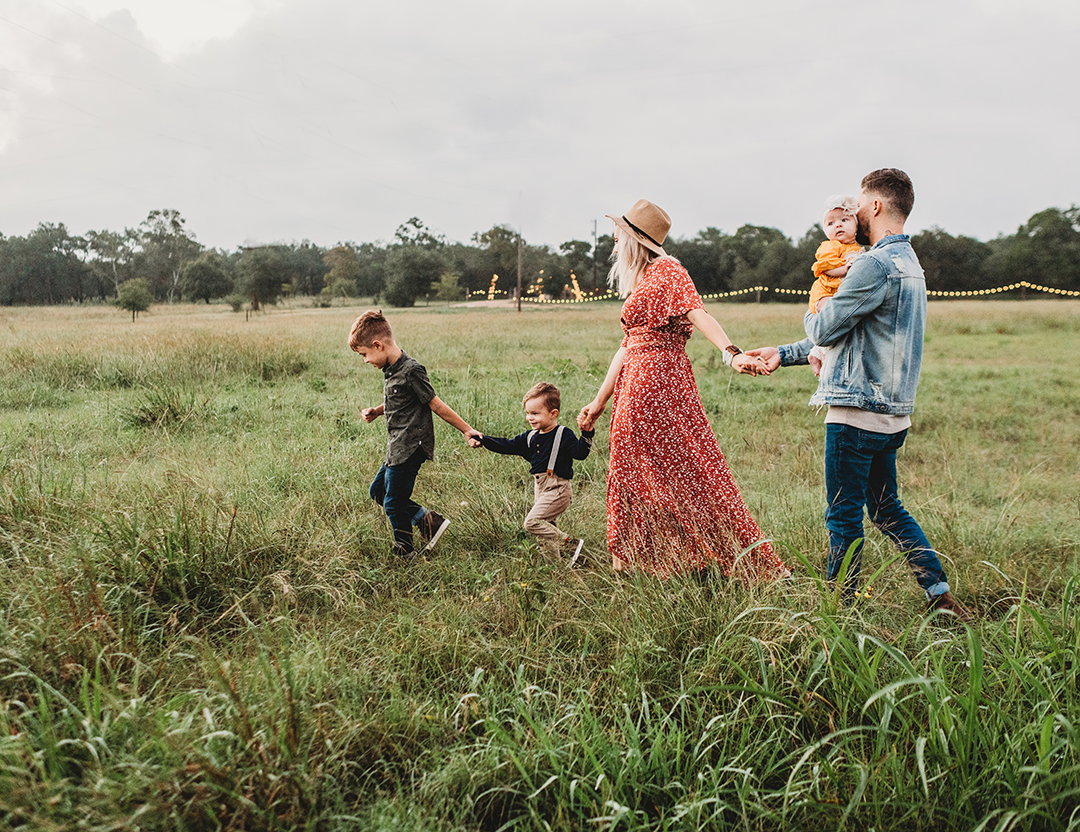In early February I woke up to my familiar life of having morning coffee with my fiancee’ Amy and giving extra treats to my two chihuahuas. That same evening, a child we had never met before, entered our home and we became an instant family. The next morning, my life was not so familiar.
My story will ring true to other foster parents out there. It will also serve as a guide to those who want to learn more.
Going from a family of two to a family of three overnight wasn’t without its challenges. How do you balance your budget with your innate desire to spoil the heck out of your new family member? What happens when your grocery bill explodes because it turns out that pre-teens eat A LOT? These challenges pale in comparison to the immense joys I’ve found in being a foster parent, and a domestic engineer, but sudden changes can certainly get your head swimming. In the world of being a foster parent, you aren’t always afforded the option to slow down the process, so I’m here to give you some tips, some financial advice, and some reassurance that you’re meant to be a part of your unique overnight family.
Let’s start from the beginning. How do you define being a foster parent?
Typical definitions of being a foster parent include:
- A foster parent is someone who welcomes non-biological children into their home short-to-long term.
- Foster parents have big hearts and love taking care of children and/or youth.
- Couples that cannot biologically have their own children decide to take care of other people’s children.
- Older couples who already raised children and want to be of service to children in need.
- A person who wants to make a difference in a child’s life who has experienced trauma.
Every single one of these answers can be true. Who is the best person to ask about the meaning of being a foster parent? Ding, ding, ding! Correct. A foster parent.

How I Became a Foster Parent
Let me tell you about my journey as a foster dad. Amy and I had been discussing starting our own family. Our obstacle of having biological children is due to Amy’s battle with an autoimmune disease she has had since the age of 12. She has a great deal of daily joint pain and even the doctor feared carrying a child could be to her detriment.
As one can imagine, it was a difficult decision for her to release the dream of carrying her own child. I know many women treasure the intimate experience of bonding prior to birth.
In June of 2019, we were looking into adoption when I had the “brilliant” idea of becoming foster parents. I have a big heart for children, especially ones that have experienced trauma and need a place to feel safe and loved. Plus, my own “dad” clock was rapidly ticking as I was about to turn the big 4-0 that month.
The very next day, we received a phone call from a friend in another state who had recently given birth. The state had removed her child and we then set out on the exceptionally long – now dreaded – journey for an ICPC (Interstate Compact on the Placement of Children). Little did we know the difficulty of the ICPC process. Moving a child across states is a long, legal process.
The ICPC was a blessing in disguise. It sparked urgency for us to start the process in becoming licensed foster parents.
That following month in July, I took a 24-hour course called Caregiver Core Training (CCT) administered by the Department of Children, Youth, and Families (DCYF) in Washington state. In that course, I learned everything possible about the good, the bad, and the ugly of being a caregiver.
Removed, a short film we had to watch, had me crying like I was back in 1997 watching Titanic. The more I learned about foster care, the more I felt like it was exactly what I was supposed to do.
After the course, Amy and I were individually interviewed. My best advice is to be prepared to answer intimate details about your life. I even had to tell them about my previous relationships as far back as high school.
We filled out a tall stack of paperwork, completed a background check and fingerprints, got up-to-date with our vaccinations, and took a CPR, first-aid, and bloodborne pathogen class. We finally were down to the last hoo-rah, the long-awaited home study.
The home study is where your licensor will make sure your home is up to code. Since we were getting licensed for an infant, we also had to childproof our home.
On Christmas Eve, we got the news that we were finally licensed foster parents! It was a nice gift after 5 months of getting everything completed. Yes, you read that correctly – 5 months.

How to Prepare for Your First Foster Child Placement
The ICPC was not moving forward. Stall after stall. I then had another “brilliant” idea to go ahead and foster another child. Tick, tick, tick my “dad” clock would not slow down.
This is where the story takes a wild turn down the jungle path. We were licensed up to 14-years-old and we have a beach-themed guest bedroom perfect for an older child. I had to lasso Amy into my big plan. She was a bit more hesitant being the wise owl she is. I was Tarzan swinging from vine-to-vine bellowing out, “Foster dad to the rescue!” in my jungle yell.
I started looking at Child Information and Placement Referral (CIPR) reports daily of children needing a home placement. These reports contain information to help you decide whether or not you and the child will be a good fit.
Many children have great needs medically, behaviorally, cognitively, and beyond. Do not sign yourself up for a child if you do not have previous experience or training to support them properly. It will not be fair to the child, or even yourself for that matter. You will soon learn that a vital part of being a successful foster parent is your own self-care.
On February 3rd, 2020 our first placement arrived. As soon as I saw her 11-year-old face, my heart burst into a million rainbows. She seemed a bit shy at first as she entered our home and looked around for the first time. Soon enough we all realized our connection felt like we had already known each other for a long time.
We nicknamed her “Mini” and that is what I will use in this article for her safety and privacy.
Tips for Being a Great Foster Parent
First off, children need rules and structure. Mini was placed so quickly that Amy and I didn’t have a chance to set up house rules, so we basically winged it the first couple of weeks. That was the initial mistake.
The next mistake was all on me. The first week, I decided to go overboard with a shopping spree for Mini. I must have thought I was Daddy Warbucks and forgot my vow to spend less and save more. I bought her a ton of clothes and toys until Amy finally gave me the all too familiar look. I think everyone knows what I am talking about – the look.
Mini was an angelic being that was perfect in every way – the first month. We were told this was called the Honeymoon period, which we later found out to be spot on.
The Honeymoon came to a crashing halt when Mini gave us two seats on her emotional roller coaster. The backtalk and anger-induced tantrums began and on one unforgettable Saturday morning she ran away. I felt like I had met Dr. Jekyll and Miss Hyde.
Amy and I learned about Positive Parenting which helped to some degree but was not 100 percent effective. Her social worker finally teamed us up with a functional family therapist. Mini learned how to have a difficult conversation without storming off. We learned about creating rules and how to stand by those rules while maintaining healthy boundaries.
When you have a child that has been through a great deal of trauma, you have to come from a place of love. The issue is that you walk the fine line between not being a pushover and not being a military general. Natural instinct will have you wanting the latter on days when your little human is screaming in your face and being sassier than Ru Paul on a fierce day.
The key is to remain calm no matter what. Even during a pandemic where you are quarantined to the house and have to homeschool a child who would rather stand on hot coals opposed to doing a math equation. Or bathe for that matter.
While it can be different for each child, my tips for being a great foster parent are:
- Have rules as soon as day one. This includes bedtime, bath days, homework schedule, and chores. If you find the child having behavioral issues, including backtalk, tantrums, throwing, hitting, or anything else, add it to the rules.
- In addition to the rules, have a list of privileges they will lose if rules are broken. Everything needs to be listed so that the child knows exactly what the rules are and what will happen if they don’t follow the rules.
- The loss of a privilege needs to match the offense. For instance, if they throw a tantrum about going to bed, removing all electronics for a week is a bit much. An example of what we do: for as many minutes as Mini refuses to go to bed, those minutes are then deducted from the following night. She knows if she fights, tomorrow night will end even sooner.
- Have a reward system in place. Mini has a Friday treasure box where she can pick out one toy if she’s had a good week. It provides even more incentive for her to be aware of her actions.
- Spend quality time with your foster child every day. They yearn for your attention and developing trust is essential. Get to know who they are, what they like, what they don’t like, and invite them – not force them – to share things about their life with you.
- Be a safe person and provide a safe space. It is your job to care for them and protect them. Many of these children did not grow up feeling safe. They are confused, lost, angry, and hopeless. It is important to allow them to be children and for them to know they are safe and protected.
- Never discuss the status of the case or make rude remarks about their parents. When we have been asked, we refer our foster children to speak to their social worker for more details. If you have a child that places their parent on a pedestal when you think otherwise, bite your tongue. A good thing you can say is that you hope their parent(s) will complete their case plan and set up a better life to take care of them. It’s a safe answer.
The Rewards of Being a Foster Parent
Being a foster parent has its challenges, but good golly, the rewards are many! Mini started to call me “dad” a couple of months ago. She even bought me this amazing coffee mug for Father’s Day.

Inside my Father’s Day card, she colored in a black circle with an arrow pointing to it that said, “You fill the hole I had by being my dad.” I couldn’t hold back the tears. I will treasure that forever.
On the good days, the three of us get along like peanut butter and jelly. We sing, we laugh, we eat more hotdogs than I ever have in my life.
Mini has brought a great deal of joy into our home. She is affectionate and gives the best hugs. Amy and I love her dearly and care about her immensely. We do not know what the future holds, but we know that while she is with us, we are making a lasting impression upon her life.
Mini has a compassionate heart and loves to help. She also has grown self-awareness and catches herself now when she feels herself getting angry and is about to lash out. Seeing her growth is amazing. We still ride on the emotional roller coaster, but the ride isn’t scary now. It’s familiar and a ride we don’t want to get off.
Foster Care vs. Adoption
If you want to adopt, foster care may not be the best option for you. For example, there is a chance you could be placed with a newborn, care for that newborn for 3-4 years, and then that newborn can be returned back to the biological family. I have known multiple cases where this has happened.
While there can be permanency in foster care, it is typically a long process. If you have a child just placed into care, the typical wait for them to become legally free is around 3-4 years. The case always begins with reunification back to the parent being the only option. After a year, if the parent is not in compliance with their case plan, the case will move toward concurrent planning. This means that the road to reunification now includes a parallel road toward adoption. Around 6-12 months later, the judge can rule in favor of adoption.
All this means is that the case now moves toward termination of parental rights which can take another year. After rights have been terminated, the adoption process can begin and can last up to another year. Until the day of adoption finally arrives, another family member could come forward and try to be the adoptive parent to the child. This will only stall everything as this new person has to go through the entire process to deem them a suitable home.
On the flip side, there is foster-to-adopt, and there are children who are about to be legally free or already are legally free that you can adopt. You still need to go through the home study process, but if you are wanting to adopt, this is really the best option. Amy and I are now in the process of looking at legally free children to adopt. While we love to foster, we also would like to start a permanent family.
Keep in mind that foster-to-adopt children are not typically newborns unless they come with an older sibling or two – or six! If you are wanting a newborn infant, then I advise you to look into private adoption.
Worried about the instant extra costs with foster care?
If you are worried about extra costs involved with adding a child or two to your home, the state will assist you financially. While this should never be a reason to be a foster parent, it should relieve some worry for those that are trying to budget for adding extra members to their family.

The amount you will receive will cover the cost of the needs of your child from food, to clothes, to extracurricular activities. For younger children, they will pay for childcare services. They cover all medical and mental care costs and children in school have a free lunch program.
The payment is subject to the age of the child and the need(s) of the child. There is a step increase for each age group and then for medical, physical, behavioral, and/or mental needs.
We typically save what’s left over for holidays, such as birthdays, and doing fun activities that she wants to participate in. We do not have to dip into our checking or savings accounts which is a nice relief. We are able to continue our plan of retiring early while growing our family.
The Happy Ending
We went into this to help foster children. What we didn’t expect was for these children to help us in return. Being a foster parent is an experience that can make you a better person. You will learn more about yourself than you ever have before. It is not always easy, but it is worth it.
While it’s heartbreaking to say goodbye if it comes to that, there is a good chance you can remain in their lives in one way or another. The happy ending is knowing that no matter what, you impacted the life of a child in a positive way. You showed them what a loving, safe, and healthy home looks like. They won’t forget it.
If you feel ready to be a foster parent, check with your state on their process and get started.
This blog post was originally published on Think Save Retire.


